
How to Use GPS: Examples, Pinouts, and Specs
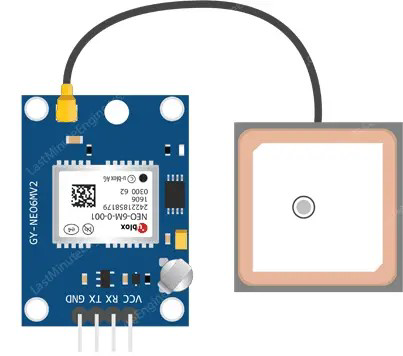
 Design with GPS in Cirkit Designer
Design with GPS in Cirkit DesignerIntroduction
A Global Positioning System (GPS) receiver determines the precise location of an object on Earth using signals from satellites. It calculates latitude, longitude, altitude, and time by analyzing data from multiple satellites in orbit. GPS modules are widely used in navigation systems, tracking devices, drones, and IoT applications. They are essential for applications requiring real-time location data, such as vehicle tracking, geofencing, and outdoor navigation.
Explore Projects Built with GPS
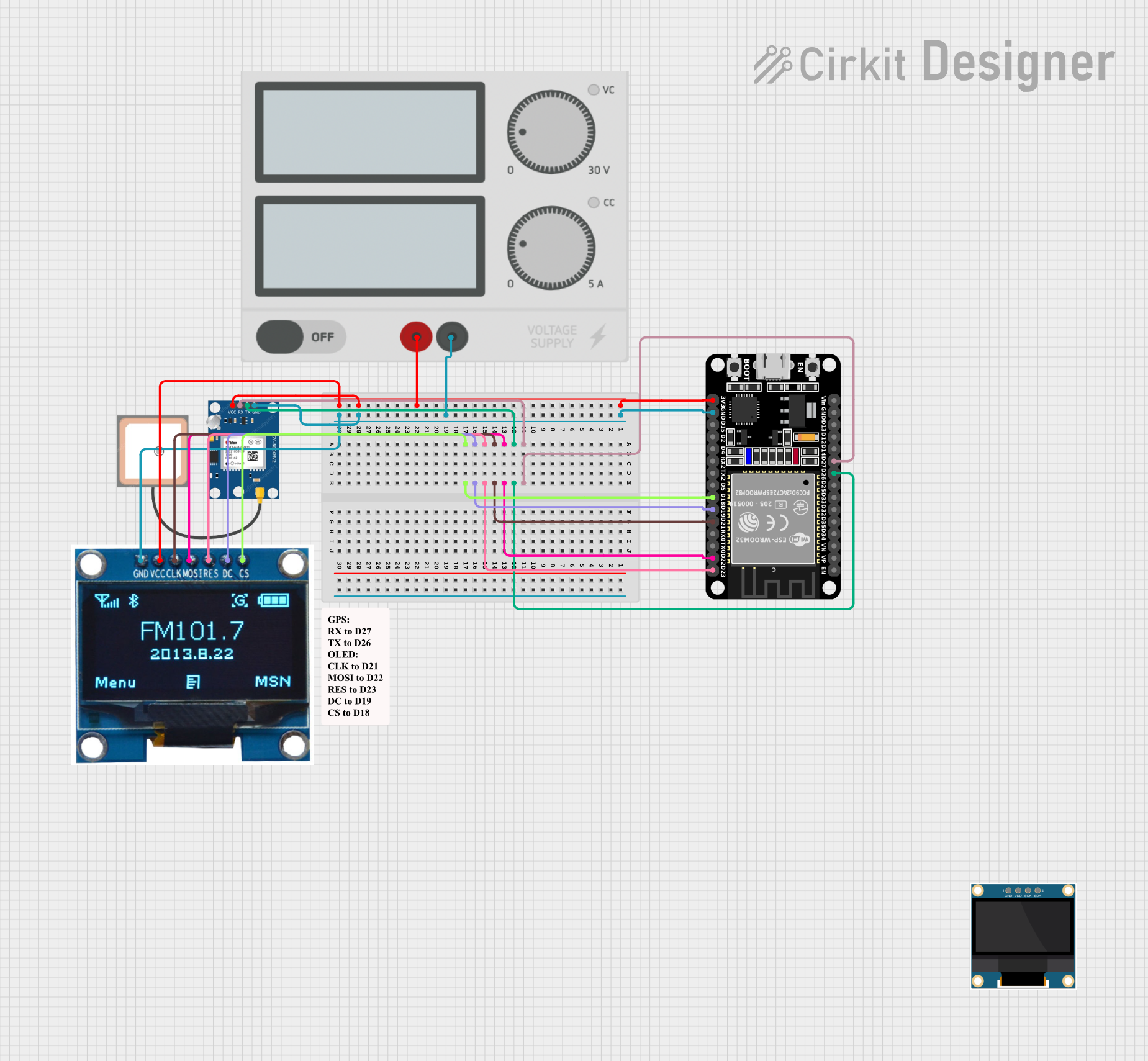
 Open Project in Cirkit Designer
Open Project in Cirkit Designer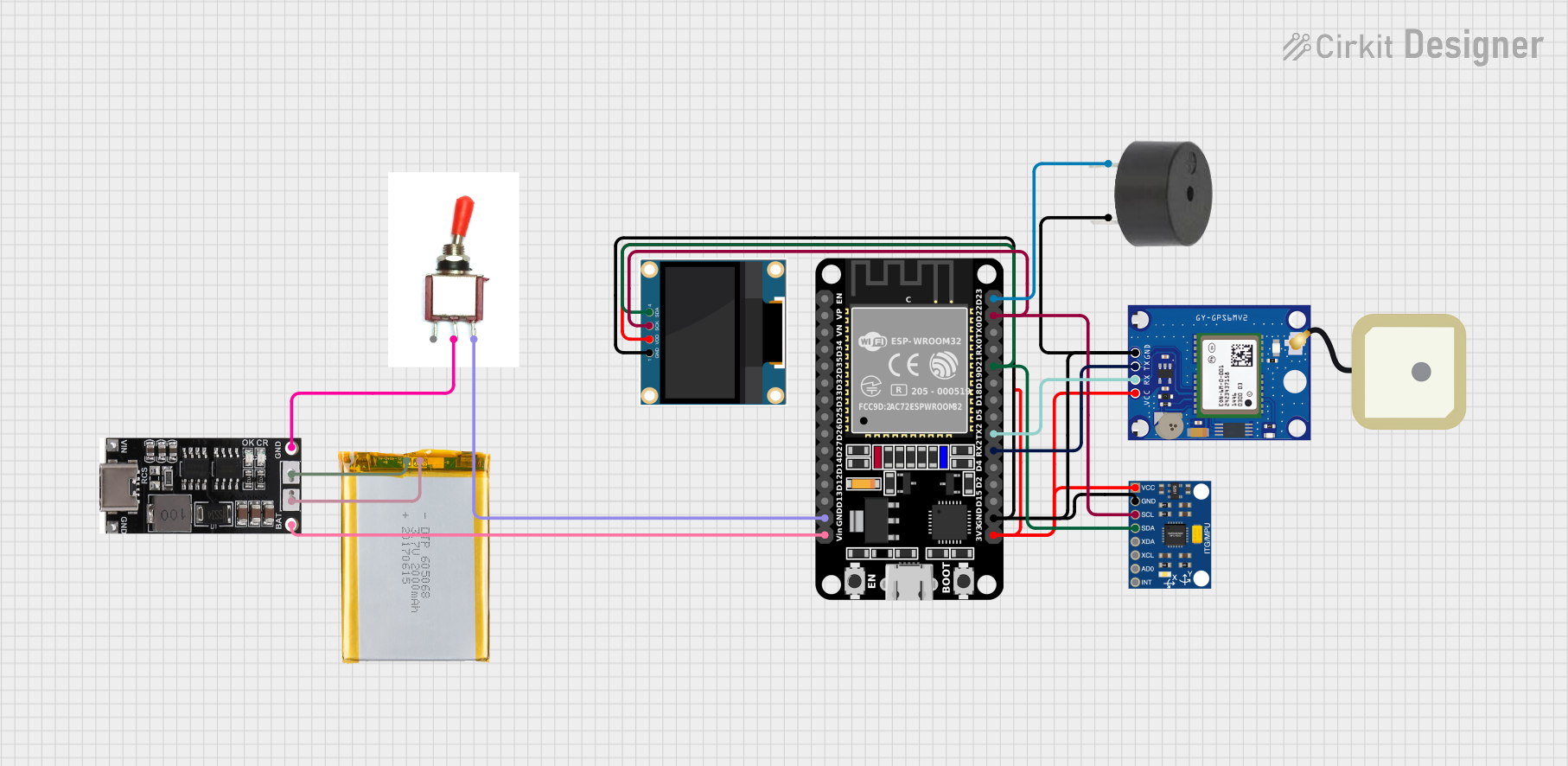
 Open Project in Cirkit Designer
Open Project in Cirkit Designer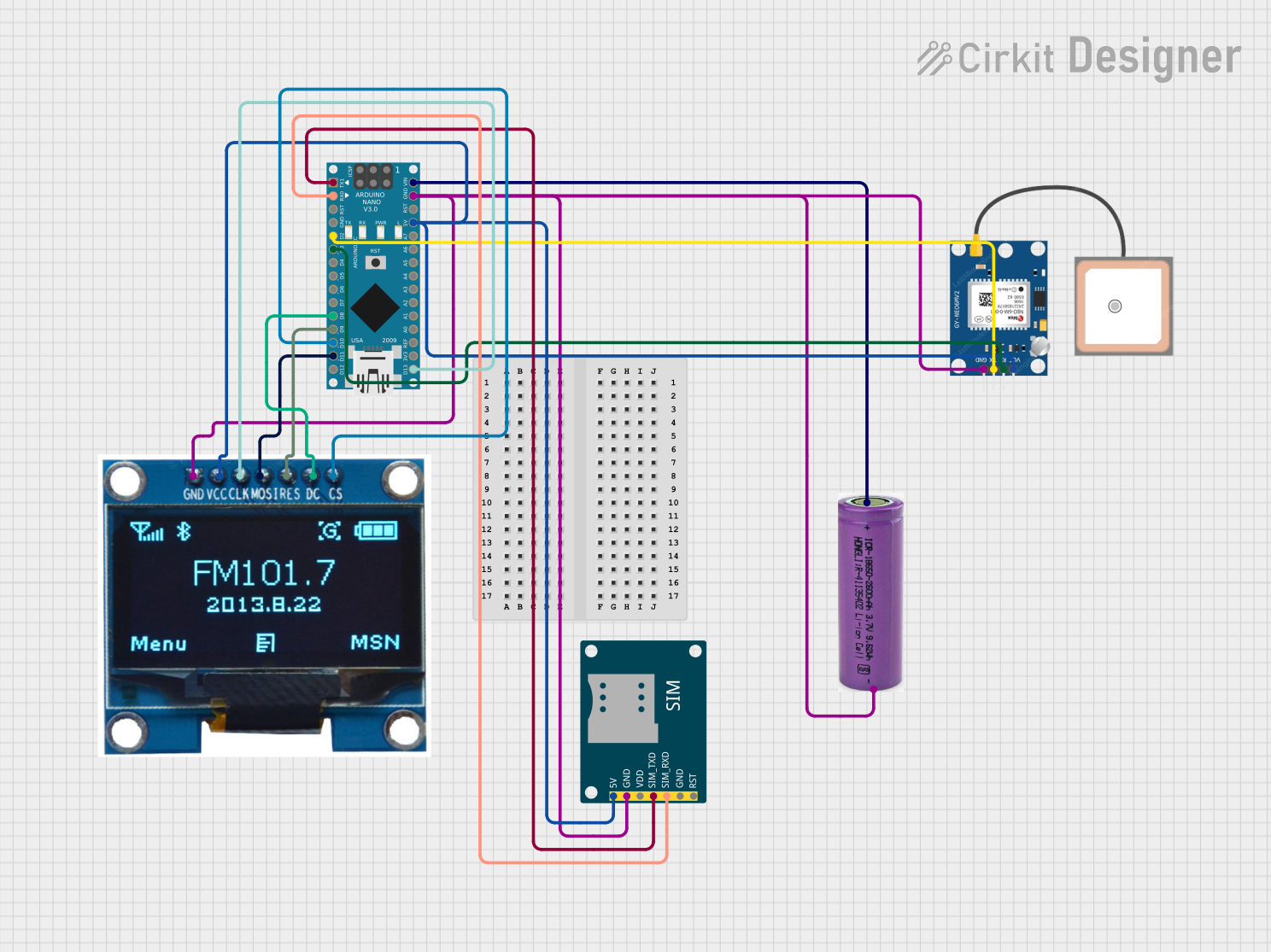
 Open Project in Cirkit Designer
Open Project in Cirkit Designer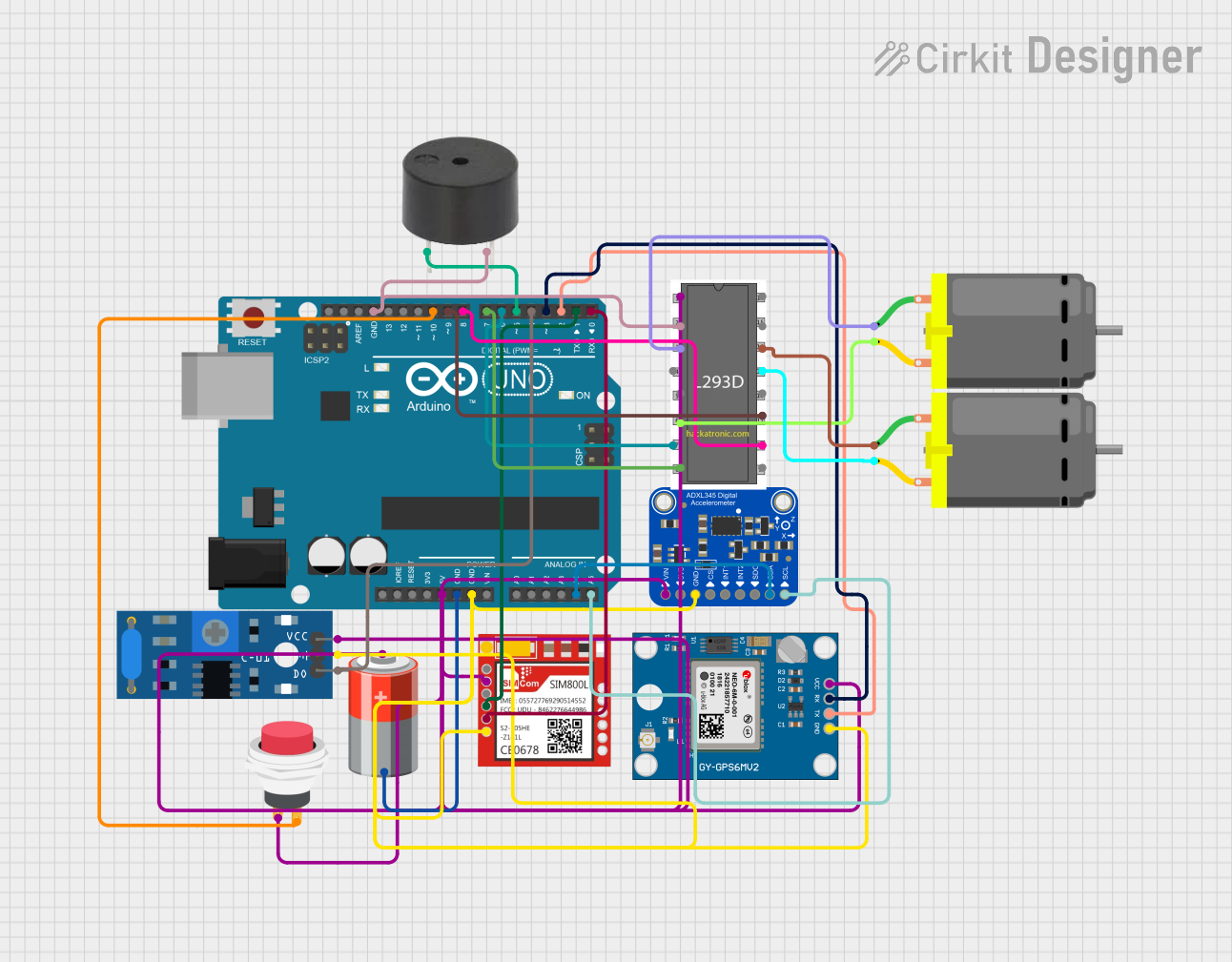
 Open Project in Cirkit Designer
Open Project in Cirkit DesignerExplore Projects Built with GPS

 Open Project in Cirkit Designer
Open Project in Cirkit Designer
 Open Project in Cirkit Designer
Open Project in Cirkit Designer
 Open Project in Cirkit Designer
Open Project in Cirkit Designer
 Open Project in Cirkit Designer
Open Project in Cirkit DesignerTechnical Specifications
Below are the general technical specifications for a typical GPS module:
- Input Voltage: 3.3V to 5V
- Operating Current: 20mA to 50mA
- Communication Protocol: UART (Universal Asynchronous Receiver-Transmitter)
- Baud Rate: 9600 bps (default, configurable)
- Position Accuracy: ±2.5 meters (typical)
- Update Rate: 1Hz to 10Hz
- Antenna: External or built-in (active or passive)
- Operating Temperature: -40°C to +85°C
Pin Configuration and Descriptions
The pinout of a typical GPS module is as follows:
| Pin Name | Description |
|---|---|
| VCC | Power supply input (3.3V to 5V). |
| GND | Ground connection. |
| TX | Transmit pin for UART communication. Sends GPS data to the microcontroller. |
| RX | Receive pin for UART communication. Receives commands from the microcontroller. |
| PPS | Pulse Per Second output for precise timing (optional, not available on all modules). |
Usage Instructions
How to Use the GPS Module in a Circuit
- Power the Module: Connect the VCC pin to a 3.3V or 5V power source and the GND pin to ground.
- Connect UART Pins:
- Connect the TX pin of the GPS module to the RX pin of the microcontroller (e.g., Arduino UNO).
- Connect the RX pin of the GPS module to the TX pin of the microcontroller.
- Antenna Placement: If the module uses an external antenna, ensure it is placed in an open area with a clear view of the sky for optimal satellite signal reception.
- Configure Baud Rate: Most GPS modules use a default baud rate of 9600 bps. Ensure your microcontroller's UART settings match this baud rate.
- Read GPS Data: The module outputs NMEA (National Marine Electronics Association) sentences, which contain location, time, and other data. Parse these sentences to extract the required information.
Important Considerations and Best Practices
- Signal Reception: GPS modules require a clear line of sight to satellites. Avoid using them indoors or in areas with heavy obstructions.
- Power Supply: Use a stable power source to avoid interruptions in GPS data.
- Antenna Type: For better performance, use an active antenna if the module supports it.
- Data Parsing: Use libraries or software tools to parse NMEA sentences efficiently.
Example: Connecting GPS to Arduino UNO
Below is an example of how to connect and use a GPS module with an Arduino UNO:
Circuit Connections
- GPS VCC → Arduino 5V
- GPS GND → Arduino GND
- GPS TX → Arduino RX (Pin 0)
- GPS RX → Arduino TX (Pin 1)
Arduino Code
#include <SoftwareSerial.h>
// Create a SoftwareSerial object to communicate with the GPS module
SoftwareSerial gpsSerial(4, 3); // RX = Pin 4, TX = Pin 3
void setup() {
Serial.begin(9600); // Initialize Serial Monitor at 9600 bps
gpsSerial.begin(9600); // Initialize GPS module at 9600 bps
Serial.println("GPS Module Test");
}
void loop() {
while (gpsSerial.available()) {
char c = gpsSerial.read(); // Read data from GPS module
Serial.print(c); // Print GPS data to Serial Monitor
}
}
Note: The above code uses
SoftwareSerialto avoid conflicts with the Arduino's hardware UART pins.
Troubleshooting and FAQs
Common Issues and Solutions
No GPS Data Output:
- Ensure the GPS module is powered correctly and the connections are secure.
- Verify that the baud rate of the GPS module matches the microcontroller's UART settings.
Poor Signal Reception:
- Place the GPS antenna in an open area with a clear view of the sky.
- Avoid using the module near electronic devices that may cause interference.
Incorrect Data Parsing:
- Use a GPS library (e.g., TinyGPS++ for Arduino) to simplify NMEA sentence parsing.
- Ensure the microcontroller's UART buffer is large enough to handle incoming data.
Module Not Responding:
- Check the power supply voltage and current requirements.
- Verify that the TX and RX pins are connected correctly.
FAQs
Q: Can I use the GPS module indoors?
A: GPS modules generally perform poorly indoors due to limited satellite visibility. Use them in open areas for best results.
Q: How do I increase the update rate of the GPS module?
A: Some GPS modules allow you to configure the update rate via specific commands. Refer to the module's datasheet for details.
Q: What is the purpose of the PPS pin?
A: The PPS (Pulse Per Second) pin provides a precise timing signal, often used in time-sensitive applications.
Q: Can I use the GPS module with a 3.3V microcontroller?
A: Yes, most GPS modules support 3.3V operation. Check the module's datasheet to confirm compatibility.